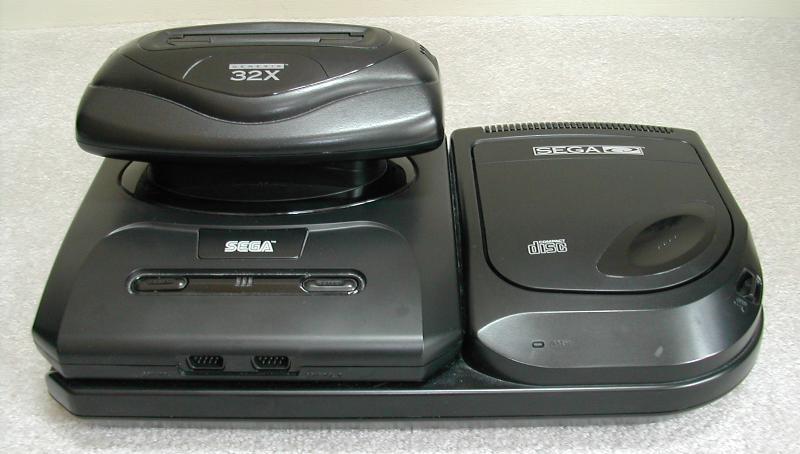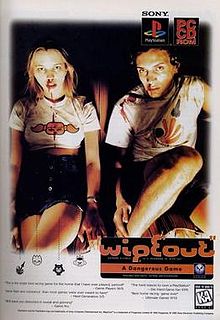Welcome to Every Video Games, our new blog that is about, well, each and every single video games that has ever been made! As you may be aware or have noticed, we had a previous blog about the same topic, which has become defunct. Those archives remain available for anyone who is interested, but we are looking to create a new and rejuvenated blog for your enjoyment so it may be wisest to consider them as two separate blogs, the archives simply happen to be here. We may well end up covering topics we have talked about previously, but hopefully the distance of time will offer new perspectives. Now, with that prelude out of the way, let us get right to business, the discussion of every video games!
And let’s start with a germane enough topic, the news from E3. Specifically, I’d like to talk about the console situation, because we’re in a rather unusual place and the only parallels I can draw don’t bode particularly well, though I’m not sure how strong those parallels are.
But let’s back up a little to talk about what exactly the E3 console news is. Before the show, rumors were flying around about console announcements from both Sony and Microsoft; rumors of particular interest because they did not just say that there would be the typical new mid-cycle upgrades in the vein of a smaller or slim model that has been popular since at least the PSOne. As the announcements bore out (especially on the Microsoft side) the rumors were largely correct.
First off is the Xbox One S, which does fit more into the mid-life upgrade model. There are modest hardware upgrades that revolve primarily around facilitating 4K and HDR Color, whilst being smaller and presumably somewhat lighter as well. There will also be a version with a 2TB hard drive, much larger than the existing 1TB largest drive for the Xone. So far this is all fairly typical and an unsurprising development in the console lifecycle.
Of more interest is the Xbox Scorpio, as well as the Playstation 4 Neo, though we have fewer details about the latter. It’s hardly a surprise that Microsoft would tout the raw power of the Scorpio and calling it “the most powerful console ever”, but simultaneously it is not a new console as such. Indeed, marketing head Alan Greenburg has said that Scorpio will not feature any exclusive titles (A claim questioned by his colleague Shannon Loftis in a later interview.)
So what does the Scorpio purport to do? First is that aforementioned raw power and it is, admittedly, an impressive spec sheet. It has an eight-core APU with tremendous memory bandwidth and six teraflops of graphical performance. These specs are indeed vastly more powerful than the existing PS4 and Xone, and that is precisely the point which raises eyebrows when we are told that there is meant to be total compatibility, yet at the same time a boost in performance if playing the game on the new console as opposed to the older one.

Something here, it would seem, has the potential to go awry. I will not say something doesn’t add up, as that would be too strong a statement at this stage, but I definitely see the possibility for this to not all work out as we are being told it will. At the very least it means developers will have to do additional work in order to ensure a given game runs appropriately on both systems, though one hopes this will be a relatively small undertaking thanks to presumed architectural similarities, something Sony Interactive Entertainment CEO Andrew House asserts to be true. Nonetheless, there is a risk that smaller or indie devs will face difficulties or have to make a choice about which iteration to release on, and if so a fragmented marketplace could reduce their viability overall. More problematic is the possibility of games being advertised as compatible with both, but in reality only having functionality on the more powerful option. What redress would players have in such a case? And if, as Microsoft and Sony have both intimated, this kind of rolling upgrade is their intended new norm, what happens another console or two down the line, when all these issues will come to the fore even if they have been successfully answered in the short term?
The concern I have is that consoles are meant to offer ease of use and absolutely rigid compatibility, where a game for a system is always a game for that system. Yes, many consoles offer varying degrees of backwards compatibility, but as good of a feature as that is, it has always been understood as a bonus to some extent, and one which is readily thrown out by console makers if it cannot be done cheaply or easily enough. This is in contrast to the PC scene where researching, purchasing, and installing upgrades is commonplace and where many players build their gaming rigs from scratch. Turning consoles into more of a PC-style platform seems like it could be risky, given that these are the tradeoffs as they currently stand.
Moreover there is, as I mentioned in the first paragraph, scope to draw some parallels. Now, this is less a question of compatibility and more of customer understanding and awareness, but nonetheless the point should probably be made. In short the gaming public likes consoles to be clearly distinct from each other and has historically had little interest in upgrades. People want to buy a console and for that to last for several years, half a decade or more, before they buy the next one. For examples of this we can begin by turning our minds back to the mid-90s, when SEGA was still a major console player and Sony was only just entering the scene. SEGA’s downfall as a console manufacturer began here, and even the Dreamcast (which is for my money essentially the platonic ideal of a video game system) couldn’t save it. See, what SEGA did was, they saw the next generation was coming and intended to get on board. But rather than putting their resources solely into what would become the Saturn, they sought to extend the lifespan of the Mega Drive/Genesis. They did this with not one, but two, hardware addons, the SEGA-CD and the 32X. Both improved the console’s performance. Both allowed designers to implement impressive new graphics, sound, and gameplay. Both had games which were well-regarded, and at least the SEGA CD has a few which remain fondly remembered today. And both were, ultimately, failures to some extent, though the 32X moreso than the SEGA-CD.

The CD came out in 1991/2 in various regions, which was about three years into the Mega Drive’s life, and offered a pretty obvious benefit in terms of power that led to a spate of early-90s FMV games that have become so infamous. It also had the requisite games which were more about showing off power than gameplay, in games like Eternal Champions: Challenge from the Dark Side. Still, it also offered games like Sonic CD, Lunar: The Silver Star, and Lunar: Eternal Blue, as well as improved versions of existing games and arcade ports. However it also had a high price point and an ultimately underwhelming library of games. The price point made it hard to justify getting alongside the base console, whilst the kind of devoted player willing to shell out the money might well already have many games the system possessed, albeit in 16-bit form. Still, although not a success, the SEGA-CD was not a disastrous failure either.
The 32X was another matter. This was not a CD based upgrade but a cartridge based one, intended to extend the lifespan of the Mega Drive into the early 32-bit era that was approaching rapidly. Quite a bit more rapidly than SEGA seemed to anticipate, in fact – the 32X ended up releasing alongside their 32-bit Saturn console, which as then-producer of SEGA of America said later, “it made us look greedy and dumb to consumers.” Now, the 32X was not without its own merits. The price point was much lower than the CD had been or the Saturn and PlayStation would be and it had significant early demand, with retailers around the 1994 holiday season running out of stocks in North America, whilst releases in Japan and Europe both had similarly good results. At the time it was seen by many as a reasonable alternative to the more expensive CD-based systems that were arriving; less powerful, yes, but also more approachable for the less-hardcore gamer.
Sadly things did not pan out as SEGA hoped. High initial demand rapidly declined as the system’s small library grew only slowly, whilst players were rapidly wowed by the potential of the CD-based systems and games like WipeOut and Panzer Dragoon, whilst offering competetive ports of both arcade and PC games. The 32X did manage a couple of these, with a well-regarded version of Virtua Fighting being a particular highlight among its limited library, but it floundered and failed with a library that totalled only forty games, six of which required both the 32X and SEGA-CD to play.
Ultimately these served exactly the opposite purpose to their intentions. The 32X especially cannibalized SEGA Saturn sales and made the company look, as stated, either greedy or incompetent. Meanwhile it could not measure up to the dedicated CD systems. Devs poured time and money into what would be a pit, souring relations with SEGA, which was not something they could afford with the relative difficulty of working with the Saturn’s architecture as well as the more libertine, adult-oriented attitude Sony was adopting to tremendous success.

Moving on from that SEGA history piece, more recently there has been a somewhat mundane yet nonetheless consequential issue with the Wii and Wii U. Nintendo’s Wii was, of course, a titanic success, proving popular with many demographics and selling over one hundred million units globally. The Wii U has in turn floundered. There are a multitude of factors which may explain this, but among them are the twin issues of confusion over naming and of confusion over why one should bother with what looks like a modest upgrade. See, those same demographics who made the Wii so successful are often not the kind of person who pays very close attention to the gaming scene. Not being involved in the cycle of console generations and upgrades it is hard to explain why they would want to get a new console when their existing one does what they want. Moreover, the similarity in names combined with the absence of a clear ‘killer app’ for the non-gaming crowd made it extremely difficult for Nintendo to drive sales. Name confusion has been cited by industry figures as a major bar for the Wii U, and though that might be overstating the point or ascribing a number of factors to that single issue, it seems eminently possible that the same problem could be repeated with the Neo and S/Scorpio versions of the PS4 and XBox One. Will Sony and Microsoft have to do as Nintendo did, and explain that these are distinct systems, not simply addons to their existing consoles? In part that will depend on the nature of the upgrades of course, but in part it will depend on factors like available games and marketing.
Is there, therefore, a risk that customers will think the Neo is simply an expensive addon for their existing PlayStation 4, which allows them to play in 4K? That the Scorpio is an accessory needing a Xone and primarily for use with VR games? (Speaking of which if things are meant to be compatible both ways, but the Scorpio is especially made to be VR compatible, one wonders whether the Xone will remain as current as MS are insisting.) It’s entirely possible the issues will be overcome and these mid-cycle consoles will prove to be successful, even enough to herald a new way of iterating that replaces console generations as we know them. But I wouldn’t put too much money on that, as the history of the industry suggests there are big pitfalls which would need to be navigated, and if the examples of SEGA in the 90s and Nintendo more recently are not studied carefully, I suspect we’ll be seeing disappointed console manufacturers within a couple of years.
What do you all think about this issue? Are the parallels I identified legitimate, or am I overstating the case? Are these upgrades unnecessary, or do they perhaps offer a lot of potential for devs to take advantage of new possibilities without leaving existing systems behind too rapidly? I’d love to hear your thoughts in the comments section!
